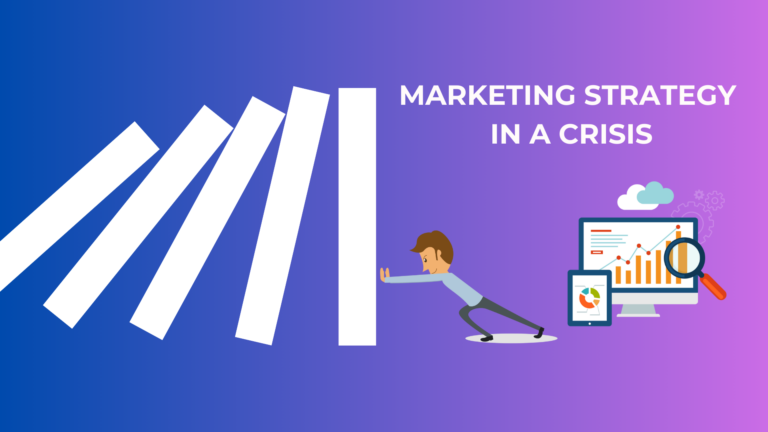Date of publication:
28 Jun. 24Customer Experience in Digital Marketing Strategy
In the modern world, many factors influence marketing strategies. Among them is customer experience. Customer experience is an integral part of marketing and branding. An important task of marketing is the need to ensure customer loyalty, increase competitiveness, and promote the organic growth of the audience.
Companies need to form a positive client experience, which must include elements such as the comfort of using a service or product, effective and quick support, an individual approach to the client, and personalization. Positive emotions and impressions of interaction with the company also play a large role.
The Concept and Meaning of Understanding Customer Experience
To fully assess the value of the customer experience for building marketing strategies, it is necessary to understand what this concept means. Experts define customer experience (CX) as the history of interaction between a particular company and its customers. Each stage of their journey towards making a purchase is subject to analysis – from marketing to sales, including customer service and all other interaction points.
It is difficult to overestimate the role of customer experience in shaping the customer’s opinion about the company and its products. It has a significant impact on the degree of customer satisfaction, their loyalty to the company, and their willingness to recommend the product or service to others.
Customer Experience as a Key Marketing Factor
Customer experience has a significant impact on marketing strategies, being a key factor. Forming a positive customer experience and managing it is the most important task of marketing. Effective interaction with customers at all stages means constantly satisfying their expectations. Effective relationships mean simplicity, speed, sensitivity, and an individual approach. Such a high level of interaction with customers provides companies with expansion and an increasing unique client base, understanding the expectations and needs of each customer. By creating a positive customer experience, companies can achieve brand differentiation, increased recognition, customer loyalty, and increased sales.
The Influence of Customer Experience on Customer Satisfaction and Loyalty
Forming a positive customer experience is one of the main tasks of any company that aims to develop and increase sales of products and services. Satisfaction is an important characteristic of customer experience, as it leads to customer loyalty. This means that customers who have had a positive experience with a product or service typically do not “switch” brands and strive to continue their relationship. The consequence of loyalty is repeated purchases, as well as recommendations of services or products to acquaintances and friends.
This expands the client base and increases sales by creating trust and attracting new potential customers. The best advertising for any product or service is positive feedback from a trusted person. In the era of social media dominance, online reviews play an important role in shaping the positive reputation of a company.
Stages of the Customer Journey and Their Impact on Marketing Strategy
There are several viewpoints about the number of stages in the customer experience. Some experts identify 3, others 4, and some even 5 or more steps in the interaction of the brand with its purchasing audience. Most experts prefer to focus on 3 basic stages, namely awareness, consideration, and decision (purchase). Post-sales service should not be discounted either. By analyzing its quality, it can be determined how positive the experience of a particular customer – individual or organization – was, and measures can be developed to improve it.
Analysis of Various Stages of the Customer Journey
Interaction with the brand or company is divided into stages, the main ones being:
- Familiarization: This is the moment when, with the help of search engines, recommendations from a close circle, advertising, and other sources of information, the customer learns about the existence of a product or brand.
- Consideration: The start of the study and comparison by the customer of possible alternatives and proposals for making a purchase decision. This can include reviews, video reviews, and comparisons of characteristics and cost.
- Purchase: Making a decision to purchase and making payment. The purchase is usually made by visiting the store, through an online order, or using any other purchase format.
The customer journey should not end there. It is very important to maintain positive relationships at the post-sales service stage.
Improving the Client Path through Marketing Actions
You can improve any stage of the marketing path to enhance the client experience as a whole. At the familiarization stage, it is worth developing attractive and informative content, placing it on the website or on social networks to attract the attention of potential customers. In addition, conduct an advertising campaign using vivid and attractive images and slogans.
The consideration stage must be supported by providing various information about services and goods, such as reviews from other users, characteristics, and comparisons with competitors. Organizing presentations and webinars will also be a smart move to explain to customers how to use a service or product. The purchase process itself needs to be simplified as much as possible, including providing comfortable and quick online payment options.
Do not forget about after-sales interaction. This stage is like an aftertaste, which should be pleasant. Therefore, it is necessary to make it as efficient as possible, with an individual approach and effective support for the client.
Feedback Collection Techniques
To adequately evaluate efforts to optimize customer experience, it is important to consider the opinions of the clients themselves, not just assess quality with dry statistical indicators. There are a sufficient number of tested tools and methods for collecting feedback. When used competently, marketers have the opportunity to understand their achievements and identify areas that need improvement.
What To Use To Collect Feedback From Customers
Methods and tools for understanding customer opinions among marketers are diverse and extensive. Among them are:
- Conducting surveys by creating questionnaires for customers to fill out. Questions can range from satisfaction with the service or product to the quality of service.
- Collecting online reviews by providing opportunities to leave reviews and ratings on the company’s website or on third-party resources, such as Google, Yelp, or Tripadvisor.
- Creating focus groups with organized group discussions to gain a deeper understanding of their opinions, priorities, and expectations, as well as subsequent analysis.
- Individually interviewing customers to obtain detailed information about their impressions and experience.
- Monitoring thematic social networks to understand customer attitudes toward the brand or company.
Advantages of Using Data from Customers in Marketing
Having a variety of information about clients can lead to significant improvements in enhancing the client path and, as a result, increasing sales and profits. Here are just some examples. The analysis of information from customers will help better understand their needs and preferences, allowing you to delve into what exactly they are looking for and what their expectations are regarding a particular product or service. This will enable you to tailor marketing strategies accordingly and develop products that perfectly meet those needs.
The undeniable advantages of using such data also include increasing the efficiency of marketing campaigns, allowing you to determine marketing messages and communication channels most effective for a specific target audience. This improves conversion by focusing on the most effective strategies.
Personalization of Marketing Campaigns Based on Customer Experience
Experts in marketing unanimously agree that personalized marketing campaigns based on a productive analysis of client experience are most effective and usually yield high results. There are several methods of personalization, including advertising and offers, that take into account user experience.
Personalization of Advertising and Offers, Considering Customer Experience
Personalization of advertising is a crucial element in the marketing strategies of any brand. It typically involves creating a personalized advertising message designed for a group of customers with similar data. Such offers do not go unnoticed by users, as they are based on their interests, needs, and personal characteristics.
An integral part of improving marketing is the personalization of offers based on user experience. This strategy aims to create exclusive and individual offers for each client, building on their history of interaction with the company. These can include mobile applications, websites, email, and other communication channels.
Assessment of the Success of a Marketing Strategy Focused on Customer Experience
Among the criteria for assessing a marketing plan, characteristics such as customer satisfaction, brand value, return on investment (ROI), and market share can be noted. Customer satisfaction and brand value are measured through surveys to gather customer feedback. A good method for evaluating how the marketing budget has performed compared to the profit is ROI.
How to Measure the Influence of Customer Experience on Marketing Efficiency
In determining the influence of user experience on marketing effectiveness, many indicators can be useful, including:
- Client surveys and feedback: Collecting information on customer satisfaction through surveys, social networks, and other channels.
- Net Promoter Score (NPS): Determining the loyalty index of customers, which shows the likelihood of customers recommending a product or service to others.
- Conversions and repeat purchases: Studying conversion funnels and the frequency of repeat purchases.
- Customer retention metrics: Calculating the retention rate and the customer lifetime value.
- Website interaction analytics: Analyzing page load speeds and the time customers spend on the site.
Key Performance Indicators (KPIs) and Success Metrics
Key Performance Indicators (KPIs) are numerical indicators of activity that help measure the degree of achievement of goals or the efficiency of processes, namely: effectiveness and efficiency. KPI indicators can be:
- Individual and collective.
- Targeted (when building a strategy) and functional (when solving current problems).
- Financial (revenue, profit) and non-financial (staff turnover, customer satisfaction).
There are also success metrics, which are the quantitative levels of indicators used by an organization to measure progress. They set specific numerical values that reflect the degree of success in achieving goals, objectives, activity results, or subsequent contributions. Indicators used to determine these metrics include:
- Profitability of investment in marketing
- Advertising return
- Return on investment
- Sales and advertising ratio
- Lifetime value
Final Thoughts About Customer Experience in Marketing
In today’s competitive market landscape, customer experience (CX) has emerged as a pivotal element of successful marketing strategies. Businesses that prioritize and invest in enhancing CX not only foster customer loyalty but also drive sustainable growth. The comprehensive understanding of the customer journey—from awareness to post-purchase support—enables companies to create tailored experiences that resonate with their target audience.
Key metrics such as customer satisfaction, Net Promoter Score (NPS), and customer retention rates provide valuable insights into the effectiveness of CX initiatives. By continually monitoring and optimizing these metrics, businesses can identify pain points and opportunities for improvement, ensuring that they consistently meet and exceed customer expectations.
Moreover, the integration of advanced technologies like artificial intelligence and machine learning into CX strategies allows for more personalized and efficient interactions, further enhancing the customer journey. As the market evolves, the ability to adapt and innovate in response to changing customer needs will be crucial for maintaining a competitive edge.
In conclusion, placing the customer at the heart of marketing strategies is no longer optional; it is a necessity. By doing so, businesses can build lasting relationships, boost brand loyalty, and achieve long-term success in an increasingly customer-centric world.



